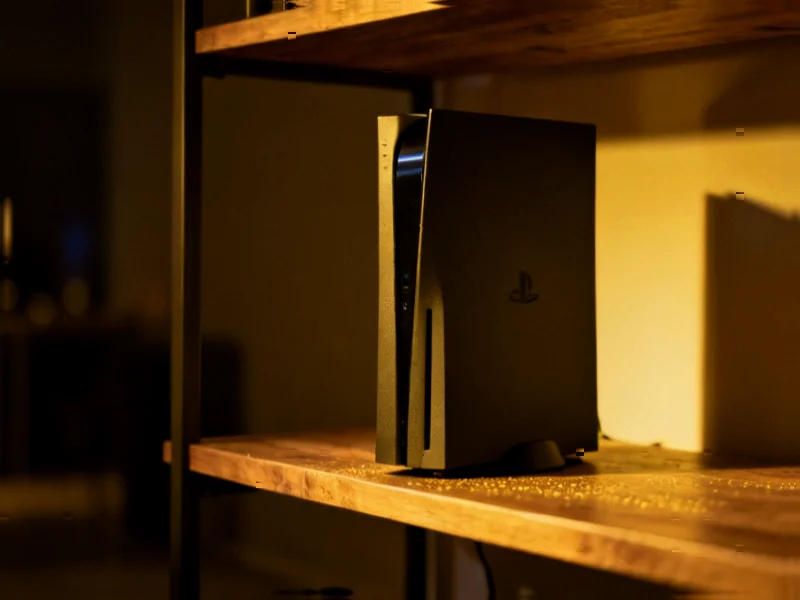According to TechSpot, Microsoft’s Xbox console revenue declined by nearly one-third during the three months ending September 30 compared to the same quarter last year, continuing a troubling trend that saw previous quarterly declines of 22%, 29%, and 42% throughout 2024. The company implemented significant price increases in May and October, with Game Pass Ultimate receiving a 50% hike that brings its annual cost to $360. Microsoft’s strategy of releasing previously exclusive titles like Halo on PlayStation and Nintendo platforms has further eroded the value proposition of Xbox hardware, while company-wide pressure to achieve 30% profit margins appears to be driving these unorthodox decisions. Despite the hardware struggles, Microsoft’s broader business showed strength with Azure jumping 40% and cloud services growing substantially, suggesting the company may be strategically de-emphasizing console sales in favor of other priorities.
Table of Contents
The End of Console Exclusivity as We Know It
Microsoft’s decision to release flagship titles like Halo on competing platforms represents a fundamental shift in console business strategy that could permanently alter the gaming landscape. For decades, console manufacturers have used exclusive titles as the primary driver of hardware sales, creating ecosystem lock-in that benefits both first-party studios and third-party publishers through platform licensing fees. By abandoning this model, Microsoft is essentially admitting that the Xbox hardware business alone cannot compete with Sony’s PlayStation ecosystem, despite Microsoft’s vastly greater resources. This isn’t just about short-term revenue—it’s a strategic acknowledgement that the traditional console war model may no longer be viable in an era of multiplatform gaming and cloud streaming.
The Subscription Service Growth Dilemma
The dramatic Game Pass price increases reveal the inherent challenges of subscription-based gaming models. While services like Netflix have demonstrated the viability of subscription media, gaming faces unique obstacles including massive development costs, shorter engagement cycles per title, and the constant pressure to deliver new AAA experiences. The 40-50% price hikes suggest Microsoft may have discovered that the previous pricing structure was unsustainable given these costs. More concerning for subscribers is the potential for a vicious cycle: as hardware sales decline, Microsoft may feel increased pressure to extract more revenue from its remaining loyal customer base, potentially driving further subscriber attrition. The crashed cancellation page following the price announcement suggests many users found the new pricing beyond their tolerance threshold.
Broader Strategic Implications for Microsoft
What TechSpot’s report reveals is that Microsoft appears to be executing a controlled demolition of its traditional console business in service of a larger platform strategy. By burying the hardware sales figures deep within earnings reports while highlighting cloud and AI growth, Microsoft is signaling to investors that gaming will be treated as a software and services business rather than a hardware one. The rumored next-generation device that combines console and PC functionality suggests Microsoft wants to leverage its Windows ecosystem strength rather than compete directly with Sony’s dedicated gaming hardware. This approach makes strategic sense given Microsoft’s strengths, but it risks alienating the core Xbox community that has supported the platform through multiple generations.
The Coming Competitive Landscape Shift
Microsoft’s pivot creates both opportunities and risks for the entire gaming industry. Sony may initially benefit from reduced competition in the hardware space, but could face pressure to follow Microsoft’s lead in releasing exclusives on other platforms. More significantly, if Microsoft successfully creates a hybrid console-PC device that provides access to multiple storefronts, it could disrupt the entire closed ecosystem model that has defined console gaming for decades. However, this strategy carries substantial execution risk—previous attempts to bridge console and PC gaming have struggled with interface challenges, performance optimization issues, and consumer confusion. The success of devices like the Asus ROG Ally suggests there’s market demand, but Microsoft will need to deliver a seamless experience that justifies what will likely be premium pricing.
Long-Term Outlook and Market Position
Looking ahead, Microsoft’s gaming future appears to be leaning heavily into its Xbox as a service rather than a hardware proposition. The company seems willing to accept declining hardware sales in exchange for broader game distribution and subscription revenue across multiple platforms. This strategy could ultimately prove more profitable than the traditional console model, but it requires navigating several transitional challenges including maintaining developer relationships, managing community expectations, and competing in an increasingly crowded subscription marketplace. The coming years will test whether Microsoft’s vision of a platform-agnostic gaming future can succeed where previous attempts to transcend hardware boundaries have largely failed.



